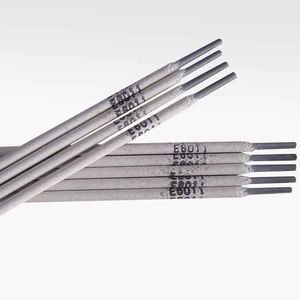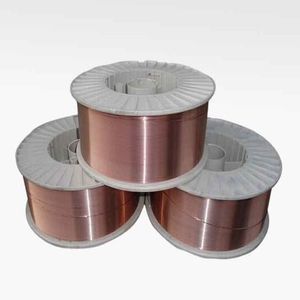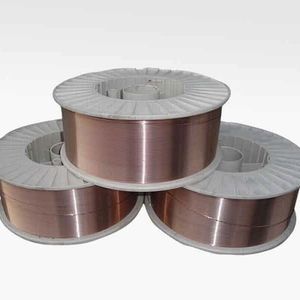
- Industrial machines and equipment
- Welding and Assembly
- Arc welding electrode
- Zibo QILU Welding Industry Co., Ltd.

- Products
- Catalogs
- News & Trends
- Exhibitions
Arc welding electrode W707for steelcoated
Add to favorites
Compare this product
Characteristics
- Type
- arc
- Welding material
- for steel
- Other characteristics
- coated
Description
Low-temperature steel electrodes mainly refer to structures used for working at low temperatures, and have strict requirements on the low-temperature toughness of weld metal. Therefore, it is generally required that the electrode strips are of a low hydrogen type, and in the deposited metal, a certain dose of nickel is often added to improve the low temperature toughness.
The electrode consists of two parts: the core and the coating. The electrode is coated on the core uniformly and centripetally with the coating (coating) outside the metal core. The welding rods are different depending on the type of electrode. The core of the welding rod is the metal core of the welding rod. In order to ensure the quality and performance of the welding seam, the content of each metal element in the welding core is strictly regulated, especially for the content of harmful impurities (such as sulfur, phosphorus, etc.). The limit is better than the base metal. The metal core covered by the coating in the electrode is called a core. The core is generally a steel wire of a certain length and diameter. When welding, the core has two functions: one is to conduct welding current, the arc is used to convert electrical energy into heat, and the other is that the core itself is melted as a filler metal and the liquid base metal is fused to form a weld.
Other Zibo QILU Welding Industry Co., Ltd. products
Products
Related Searches
- Welding electrode
- Arc welding electrode
- Steel welding electrode
- Soldering wire
- Arc welding wire
- Carbon steel welding electrode
- Surfacing welding electrode
- Copper soldering wire
- Stainless steel welding electrode
- Coated welding electrode
- Flux core soldering wire
- Heat-resistant welding electrode
- Process welding electrode
- Steel welding wire
- Cast iron welding electrode
- Gas welding wire
- Aluminum welding wire
- Resistance welding wire
- Aluminum alloy welding wire
- Carbon steel welding wire
*Prices are pre-tax. They exclude delivery charges and customs duties and do not include additional charges for installation or activation options. Prices are indicative only and may vary by country, with changes to the cost of raw materials and exchange rates.














